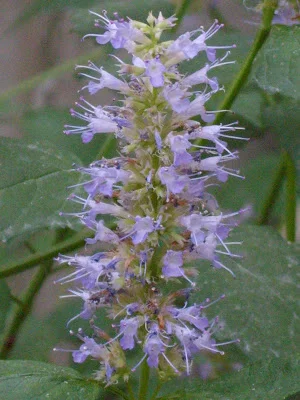The book is described as a mix of The Hunger Games and The Handmaid's Tale, but with bees and while I've not read either, from what I have heard and seen that would be accurate. The story itself was engaging and well written. However, while it is well written and engaging, describing insect society in a manner that you would a human society gets rather grim, incredibly fast.
Take a Breath and Listen to the Bees
Even with everything occurring and abundant uncertainty, take a moment to drink some water, take a breath, and perhaps even hum a few bars like the bees do. It won’t create a vaccine, nor feed someone in need, nor even get your shopping done. However, it might just help you relieve the tension and other stresses you’re holding, at least for a time.
DIY Bee Bath / Waterer (Tutorial)
Garden Helpers: The Bees, the Bugs, and the Doodlebugs
Giant Hyssop (Agastache rugosa)
Purple Giant Hyssop, Wrinkled Giant Hyssop, Korean Mint, Blue Licorice, huò xiāng (藿香), bangsnnip (방아잎), Patchouli herb--whatever regional name is chosen, they all refer to the same plant: Agastache rugosa (Fisch. & C.A.Mey.) Kuntze. For purposes of this post, the two most abundant names I found were (Purple) Giant Hyssop and Korean Mint, hence the top-title billing.






